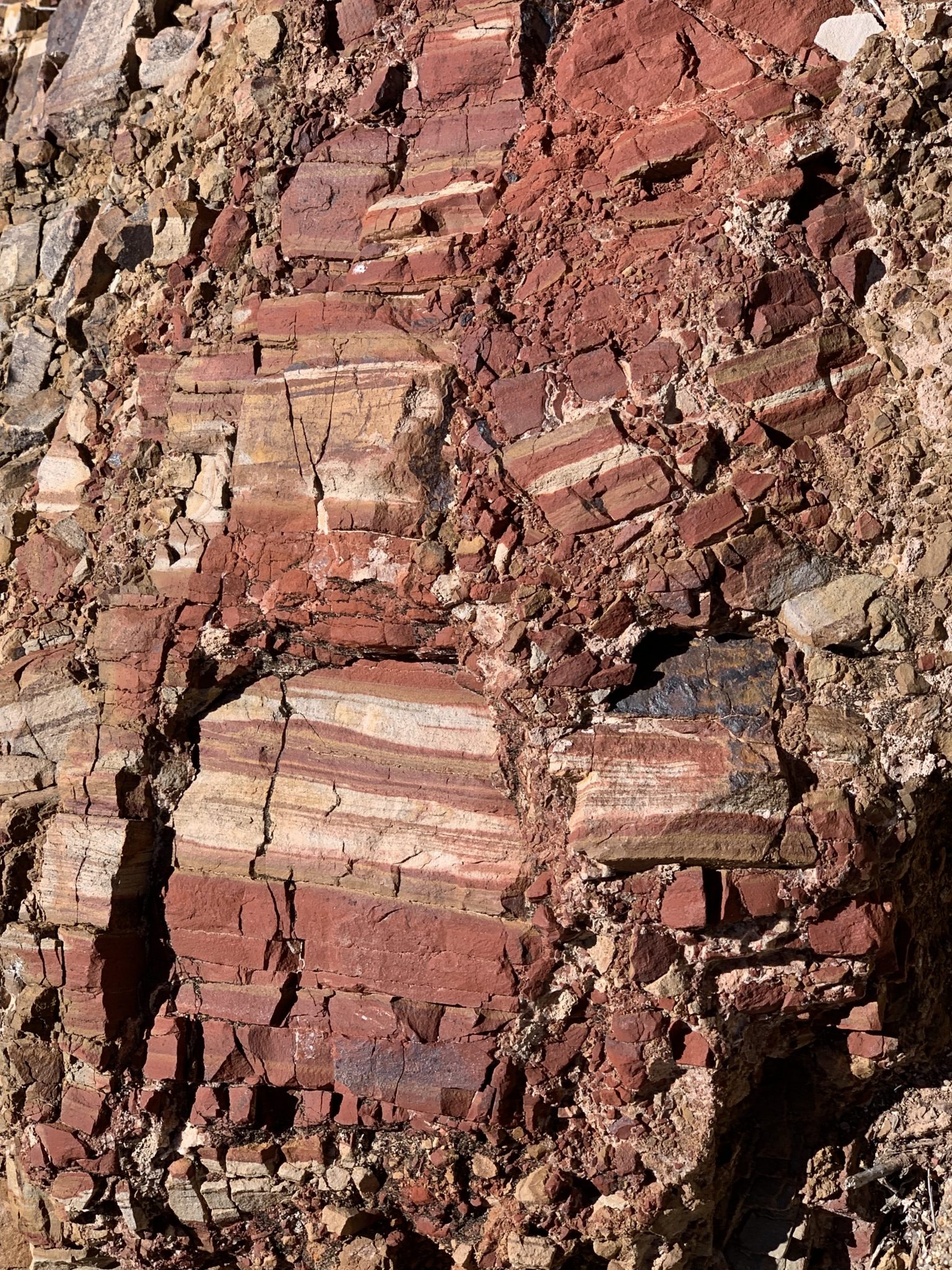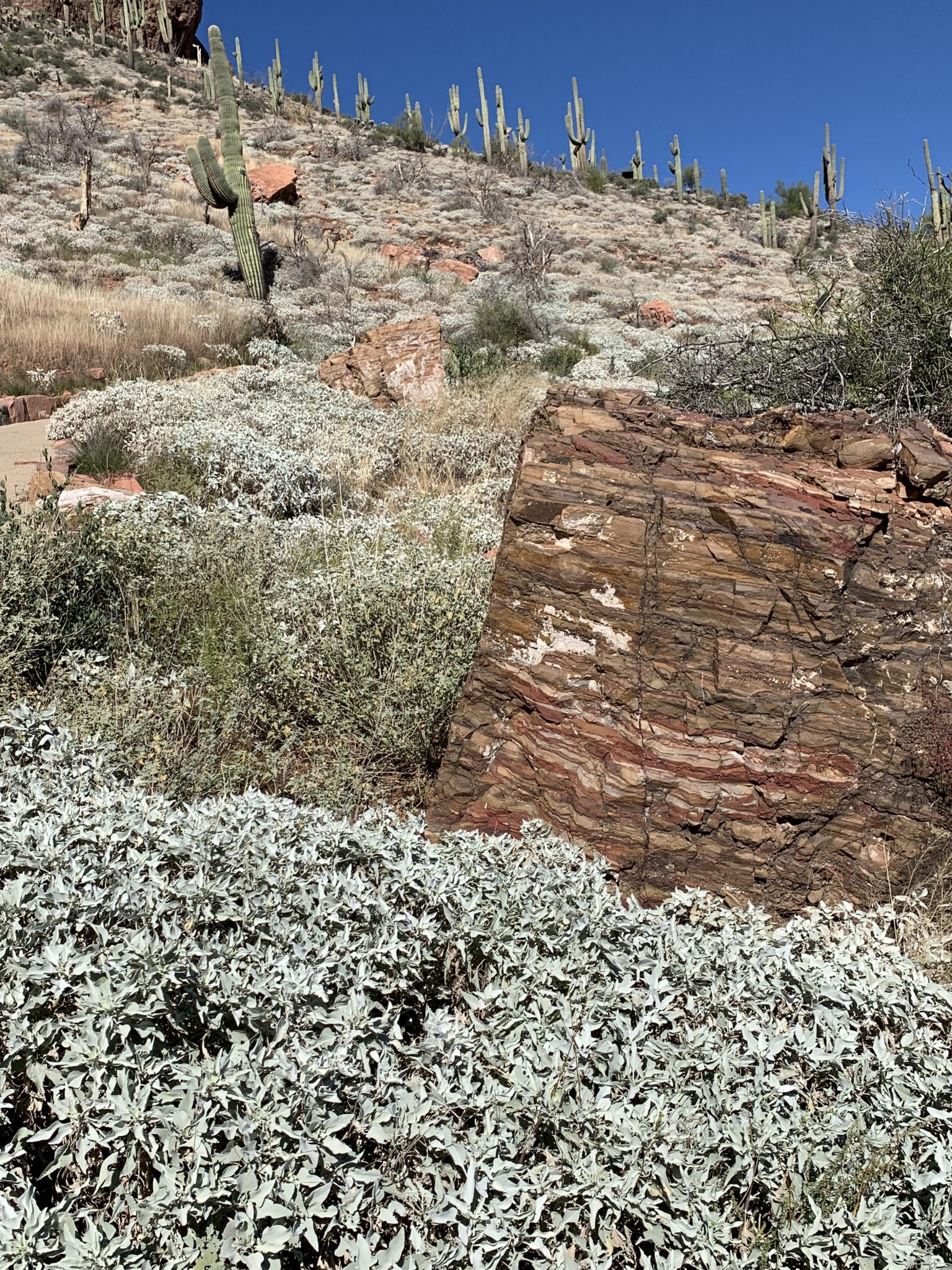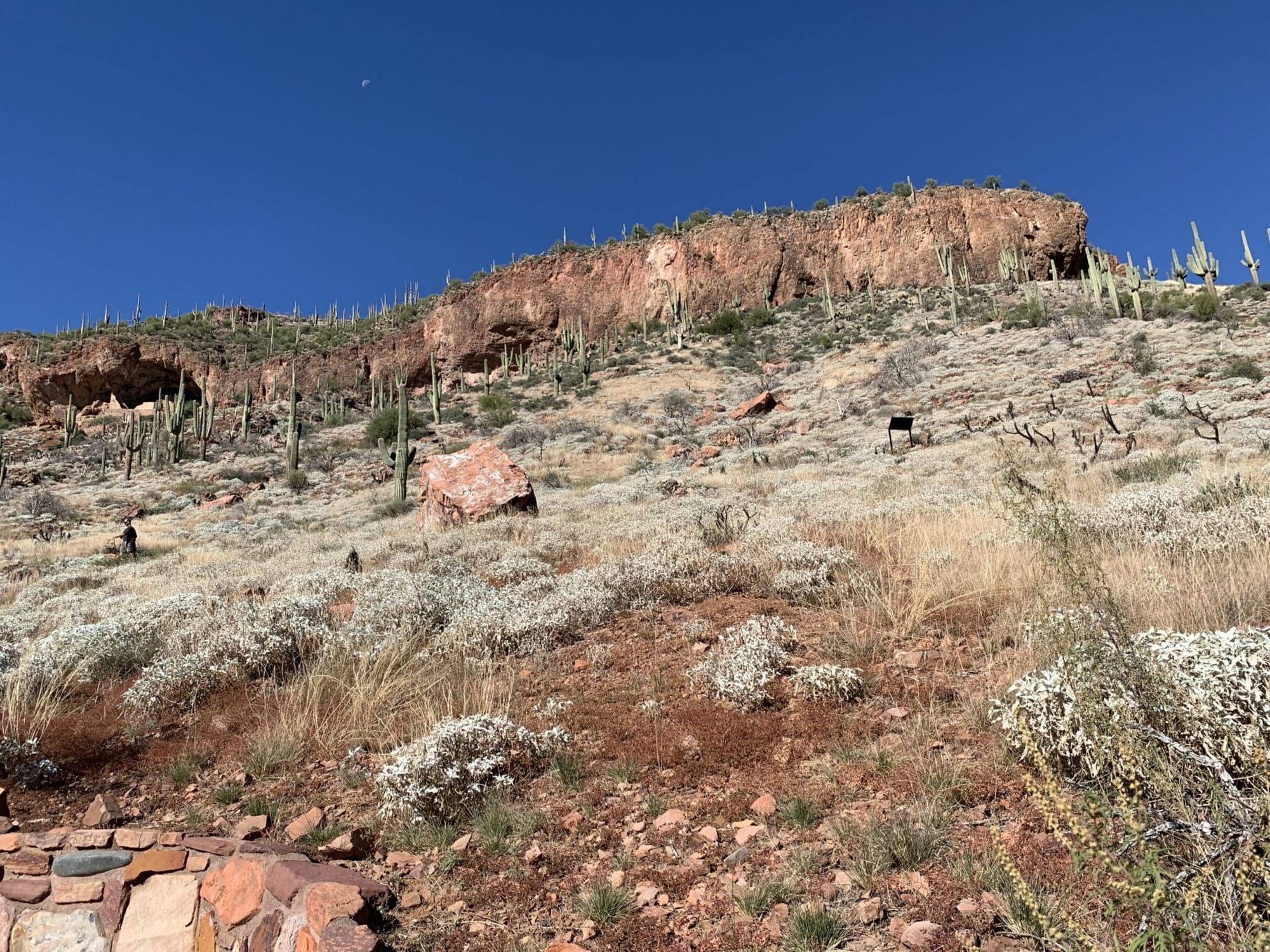
Back in the day, and by “back” I mean about 900 years ago, a group of people now known as the Salado found a couple of great caves to live in. Two hundred years later, they left. The higher, better preserved one can only be visited on guided tours that

Back in the day, and by “back” I mean about 900 years ago, a group of people now known as the Salado found a couple of great caves to live in. Two hundred years later, they left.
The higher, better preserved one can only be visited on guided tours that run between November and some time in the Spring. We were there a week early. But we did make the short walk up to the lower cave. Both the dwelling and the flora along the way made it worthwhile.
Join us sightseeing on the switchback path.
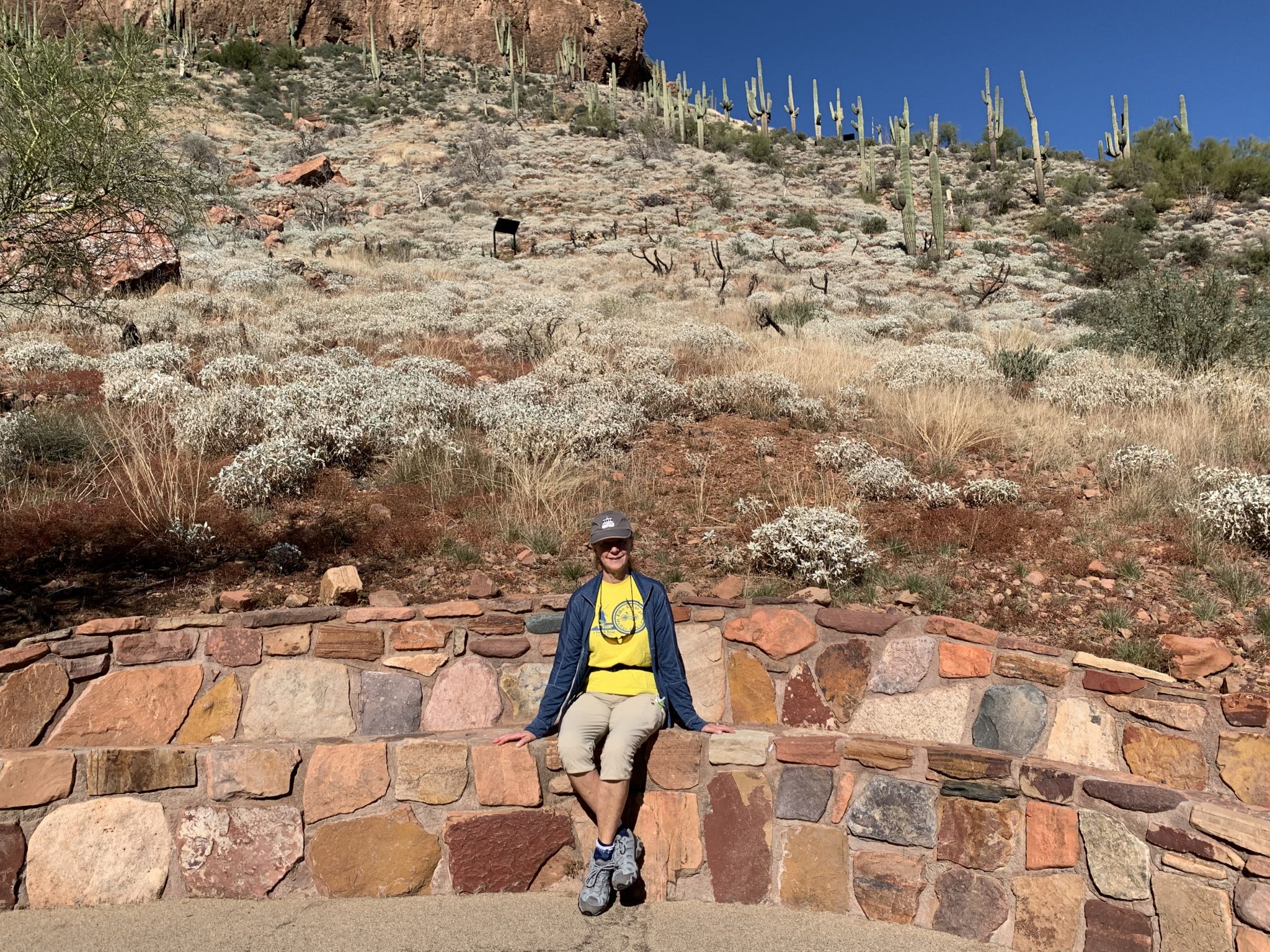
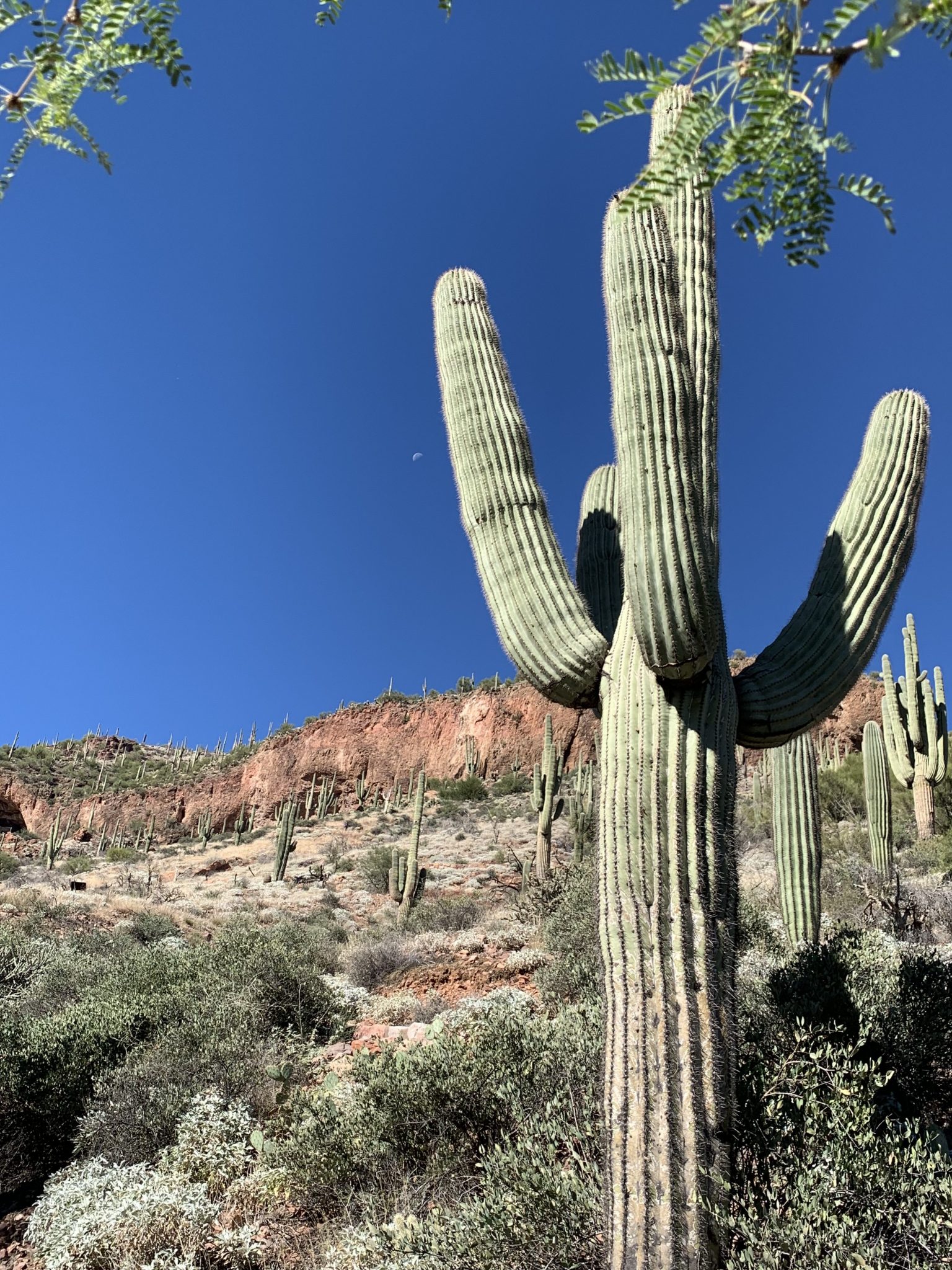

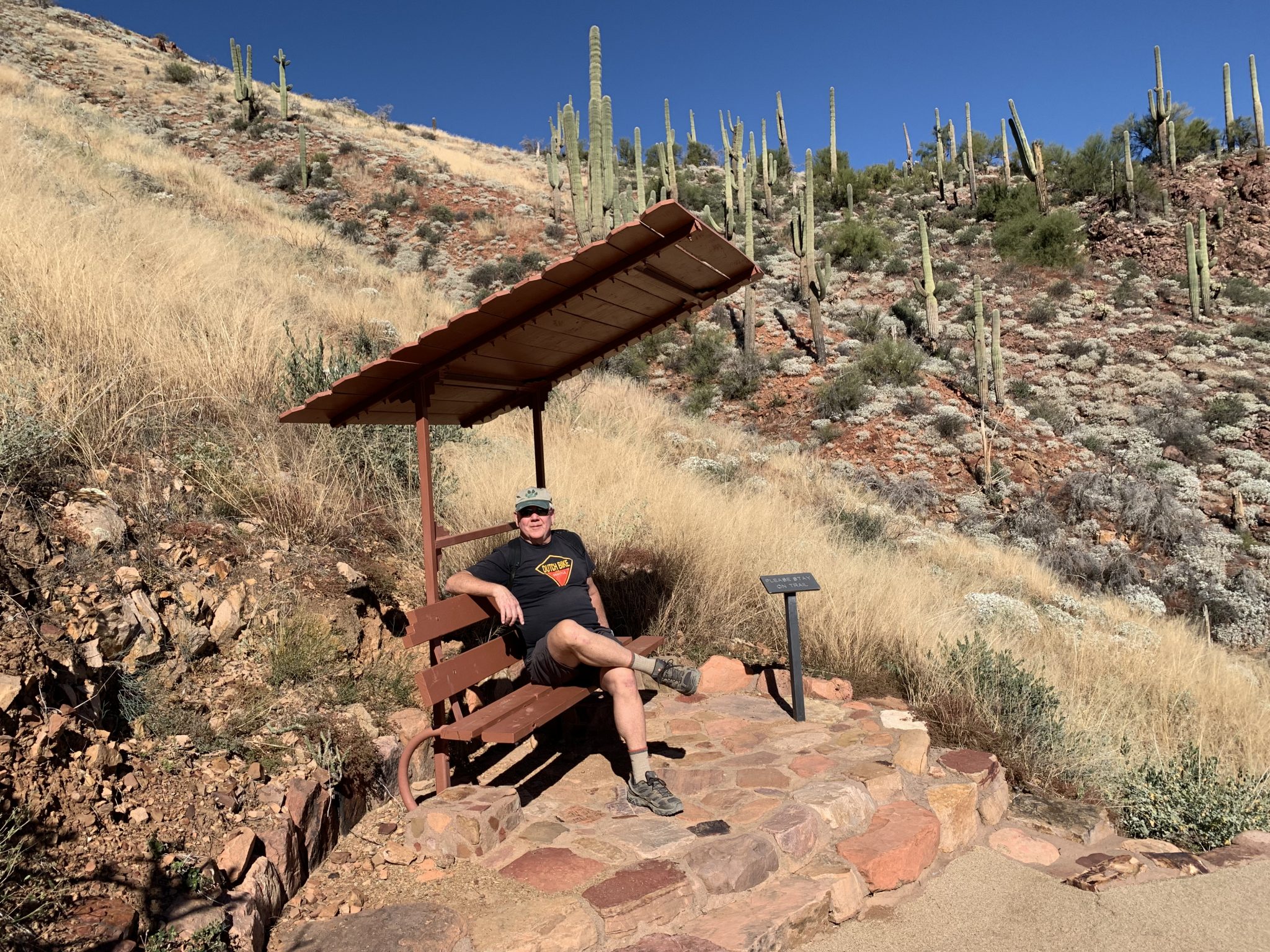
Erosion breaks huge blocks off of the cliff face. You can see them all down this chute.
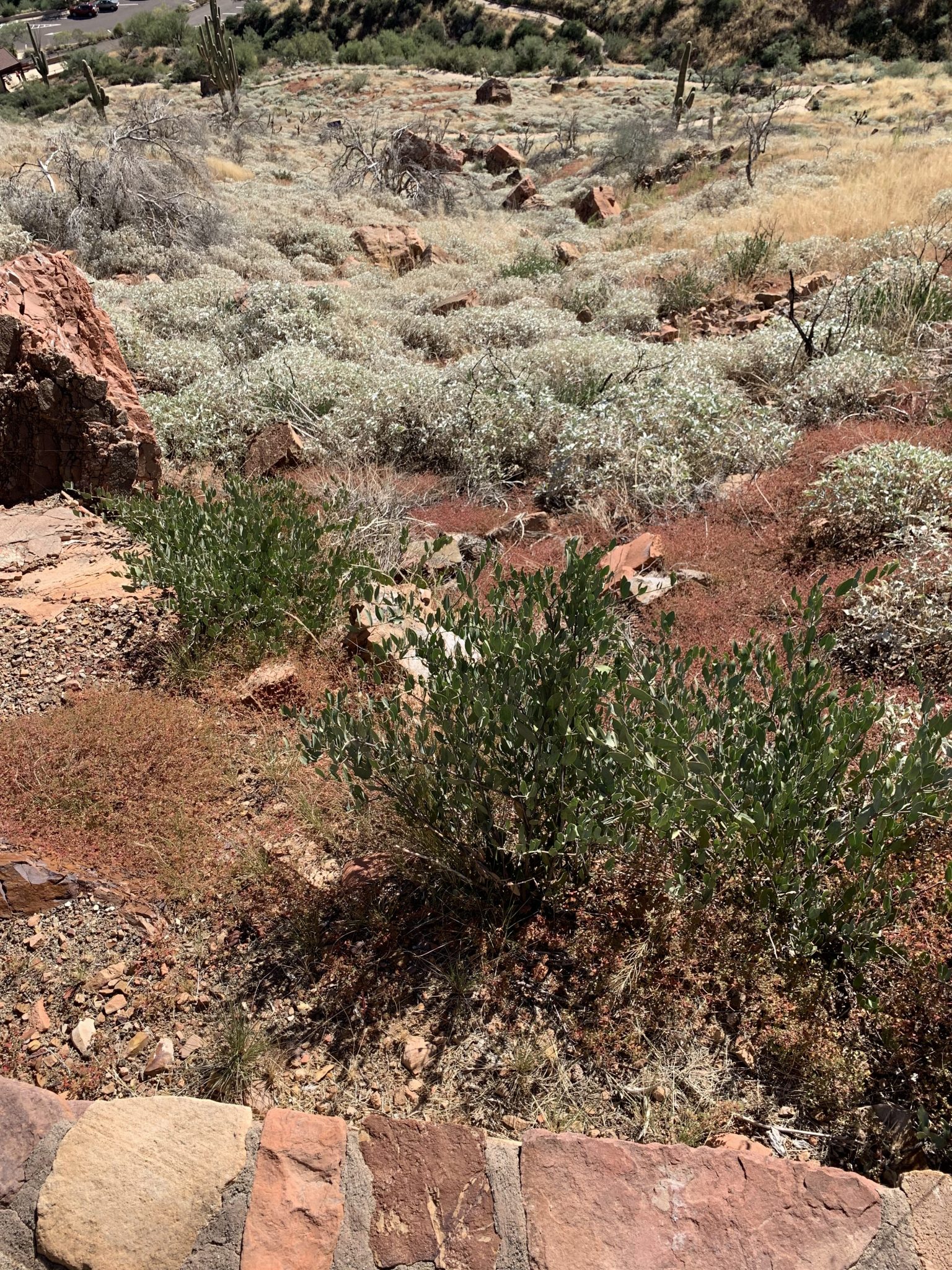
That’s Roosevelt Lake down there. You can bet that the Salado had legs of steel zipping up and down these hills for food, water and so on.
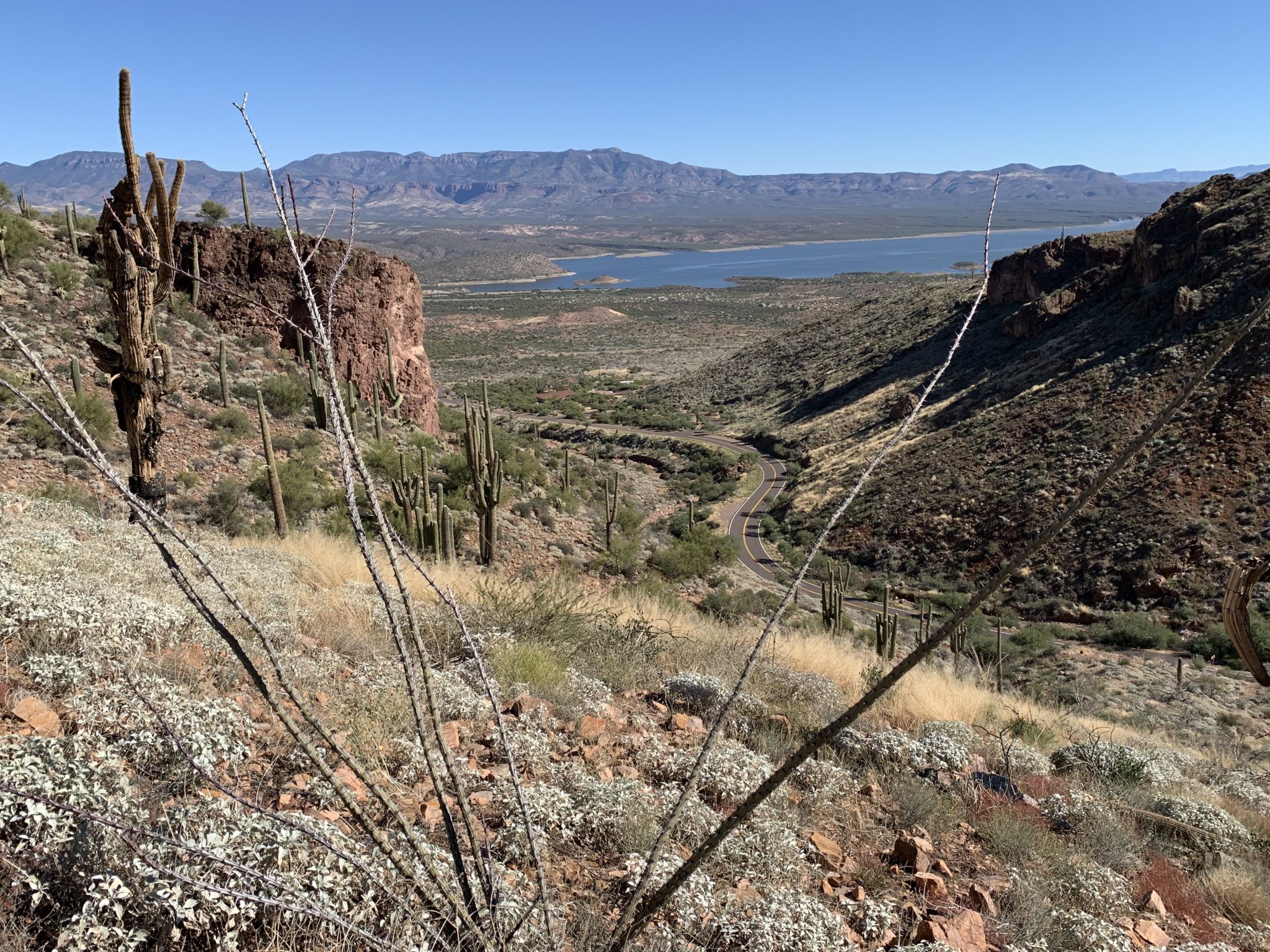
just like Mary Anne!
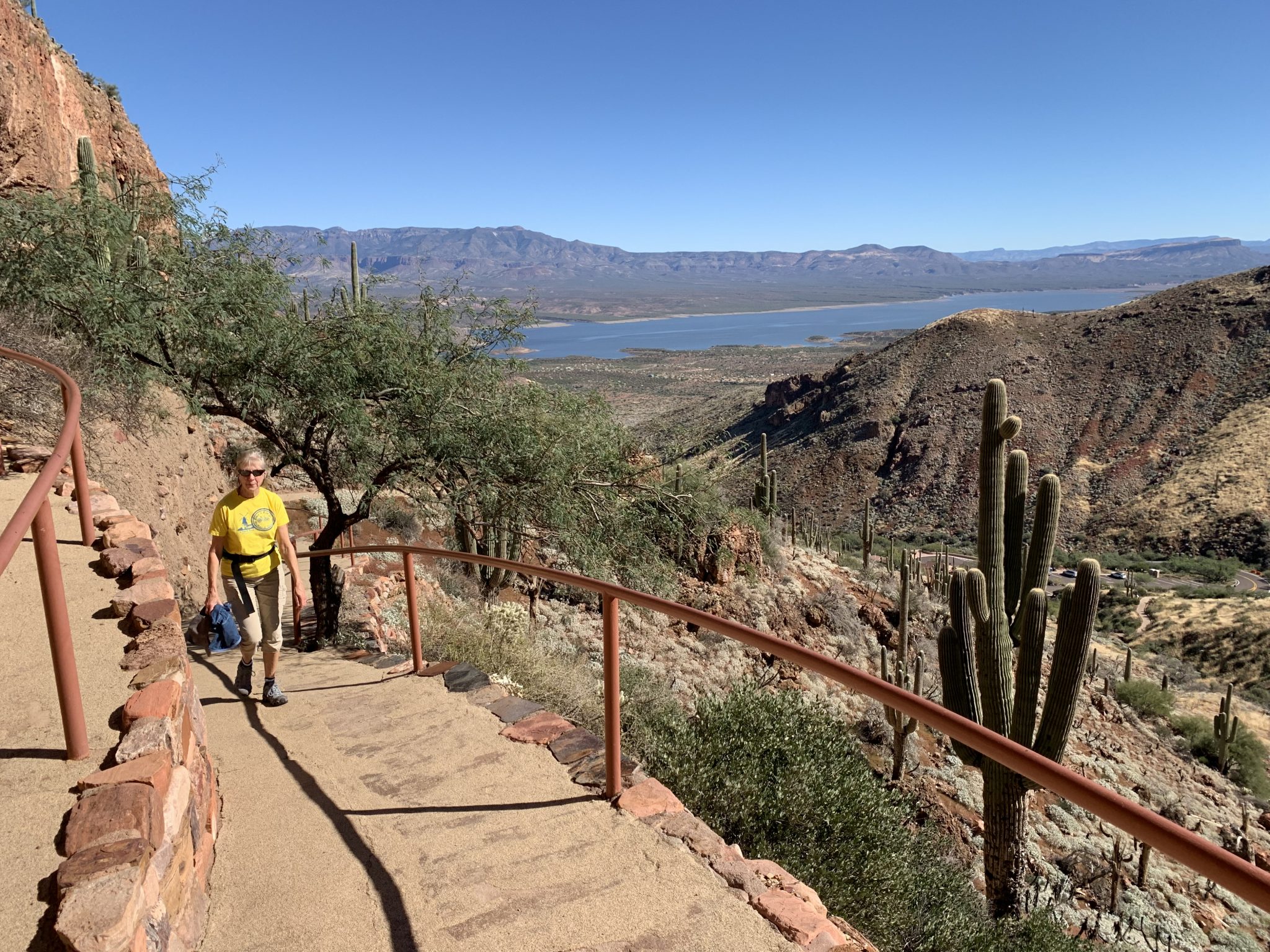
I’ve assumed that people lived in caves high in the air for defensive purposes, and I’m sure that some did. But from what we know of this two-cave village, life was generally peaceful. The Tonto basin, where food and water were sufficient, was a kind of trading and cultural crossroad. As evidence of the scope of trade, remains of a Macaw from Central America were found in the site. Salado pottery, prized for its quality, has been found elsewhere.
That said, the village was not open like this when it was occupied. There was a solid front wall and a single, easily defended, entrance. We can thank tourists from a hundred years ago for site damage. Climbing all over fragile mud walls and taking souvenirs, were not great ideas.
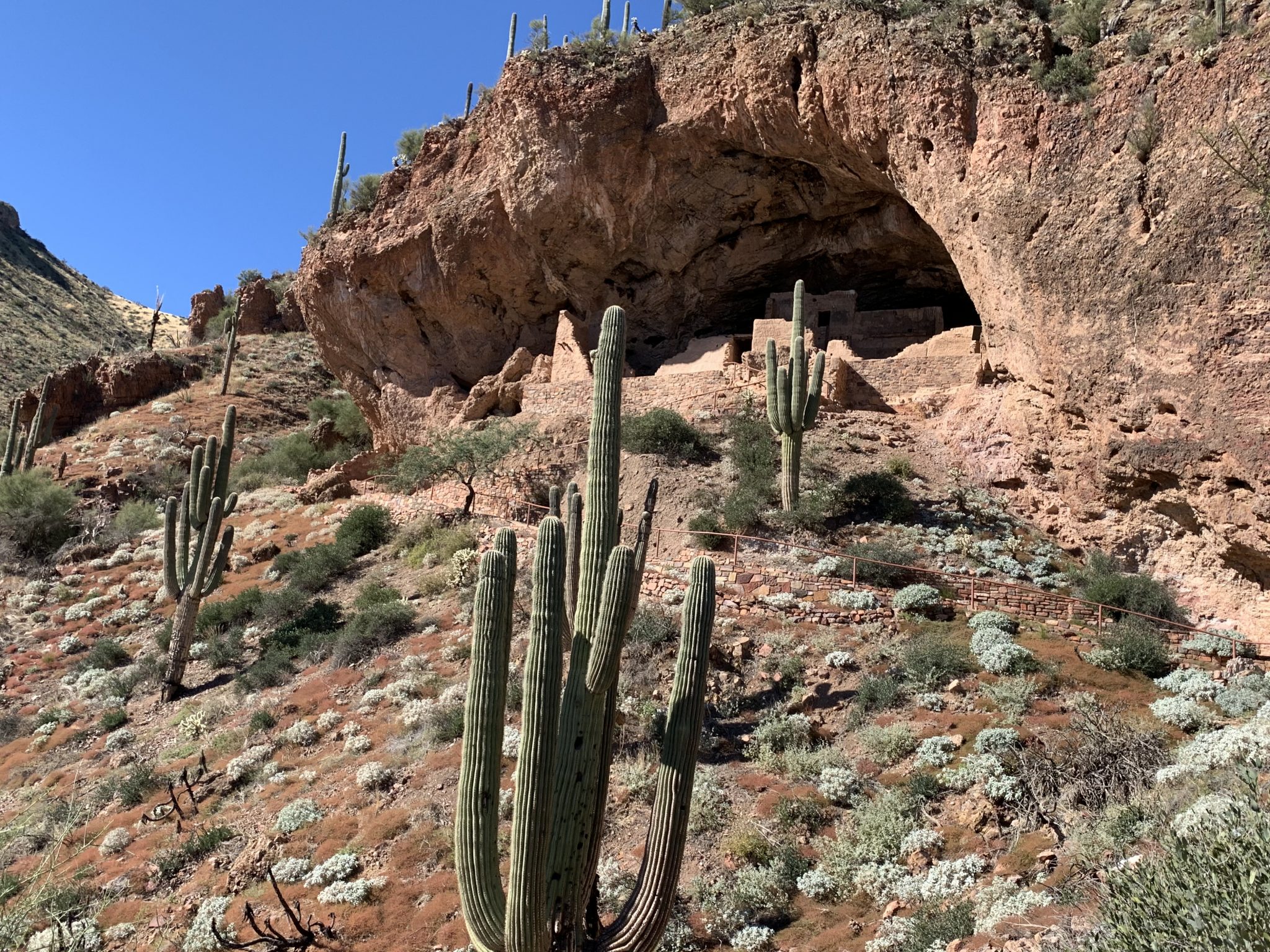
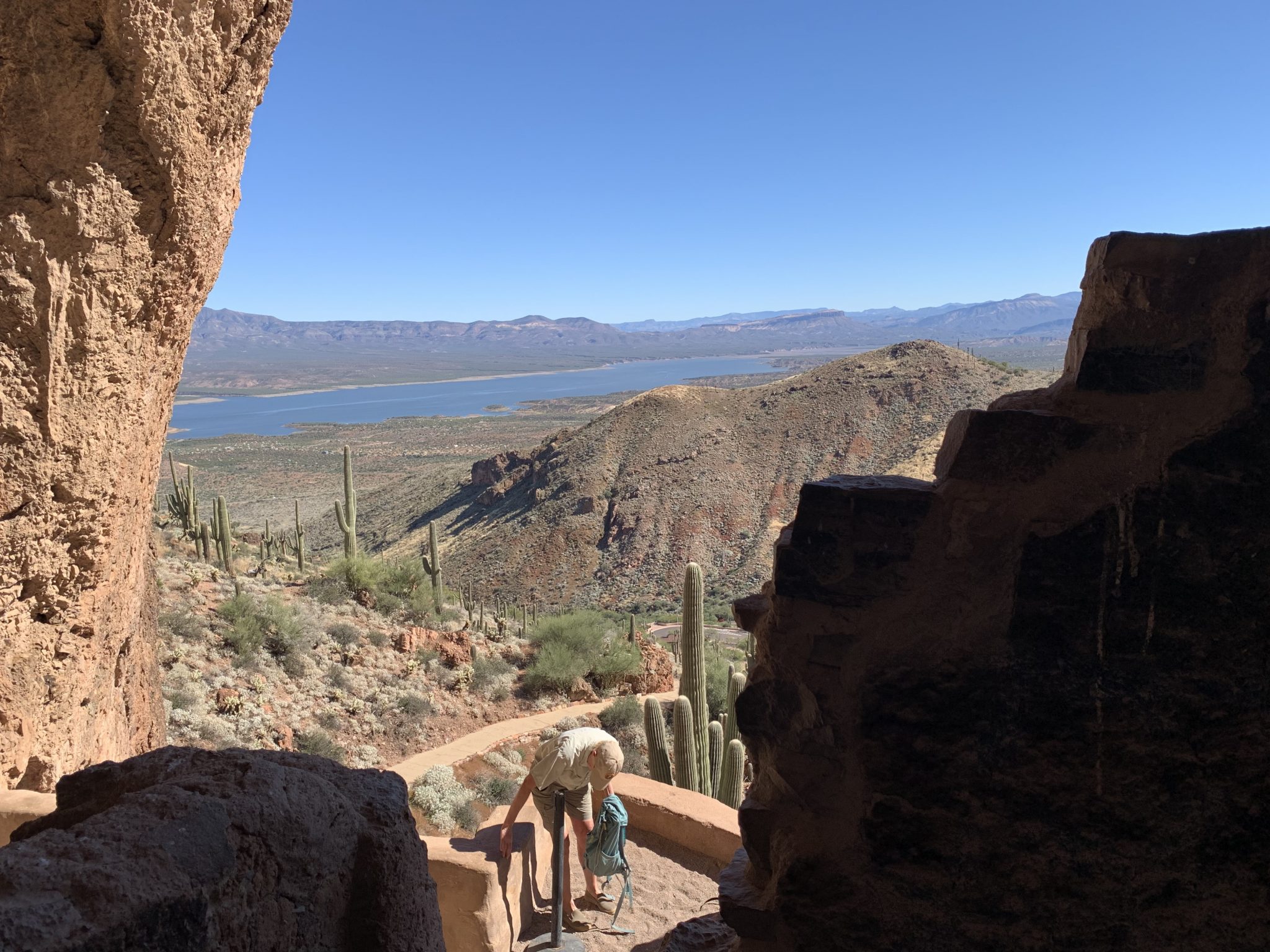
Having toured way more European castles than pueblos, I first thought that Mary Anne was standing in front of a huge fireplace with an overhead wooden spit for roasting. Of course it’s not that at all. We are looking at the remaining walls of a two story room. The wooden beams were part of the second story floor.
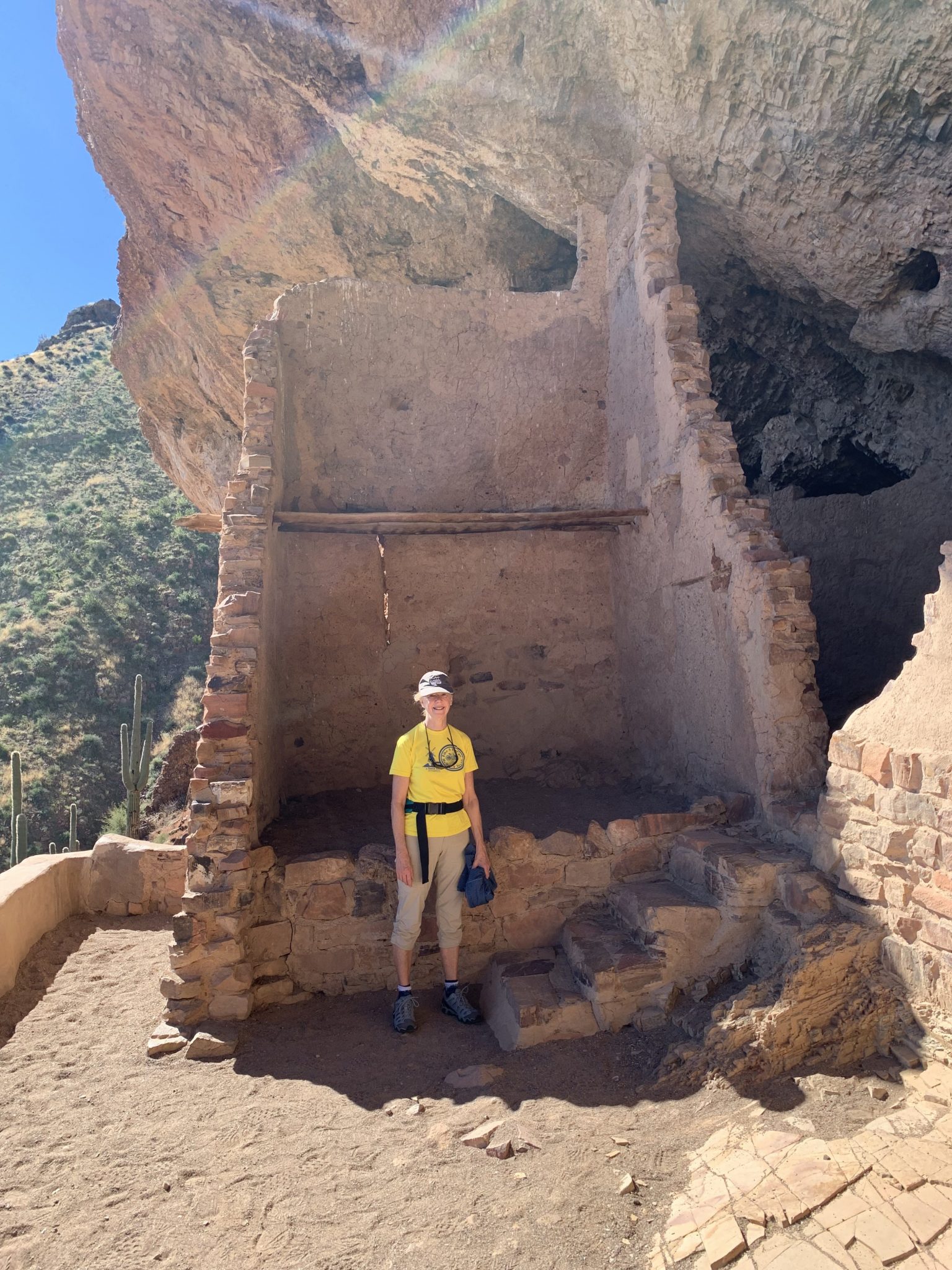
Another room with part of the second story floor and a door into a room farther back in the cave.

Mary Anne examines a room believed to be used for meetings. Several “bowls” were carved into the seating areas so that women could continue to grind grain while listening to discussions. You can see one to the right of her right elbow.
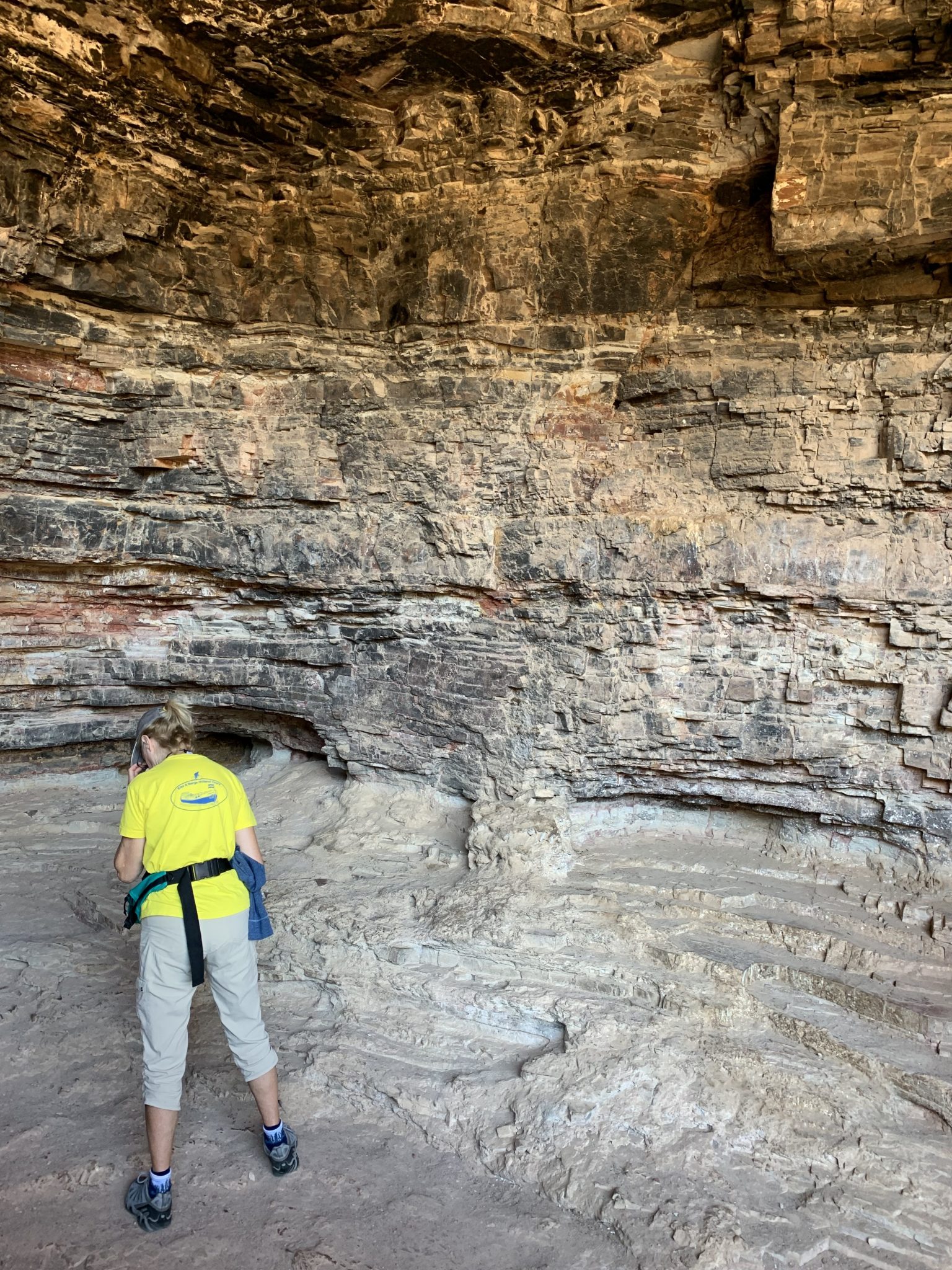
You are looking at handprints from the 1200s. The walls are a combination of rock and mud. The handprints were formed when workers pressed the mud into place.
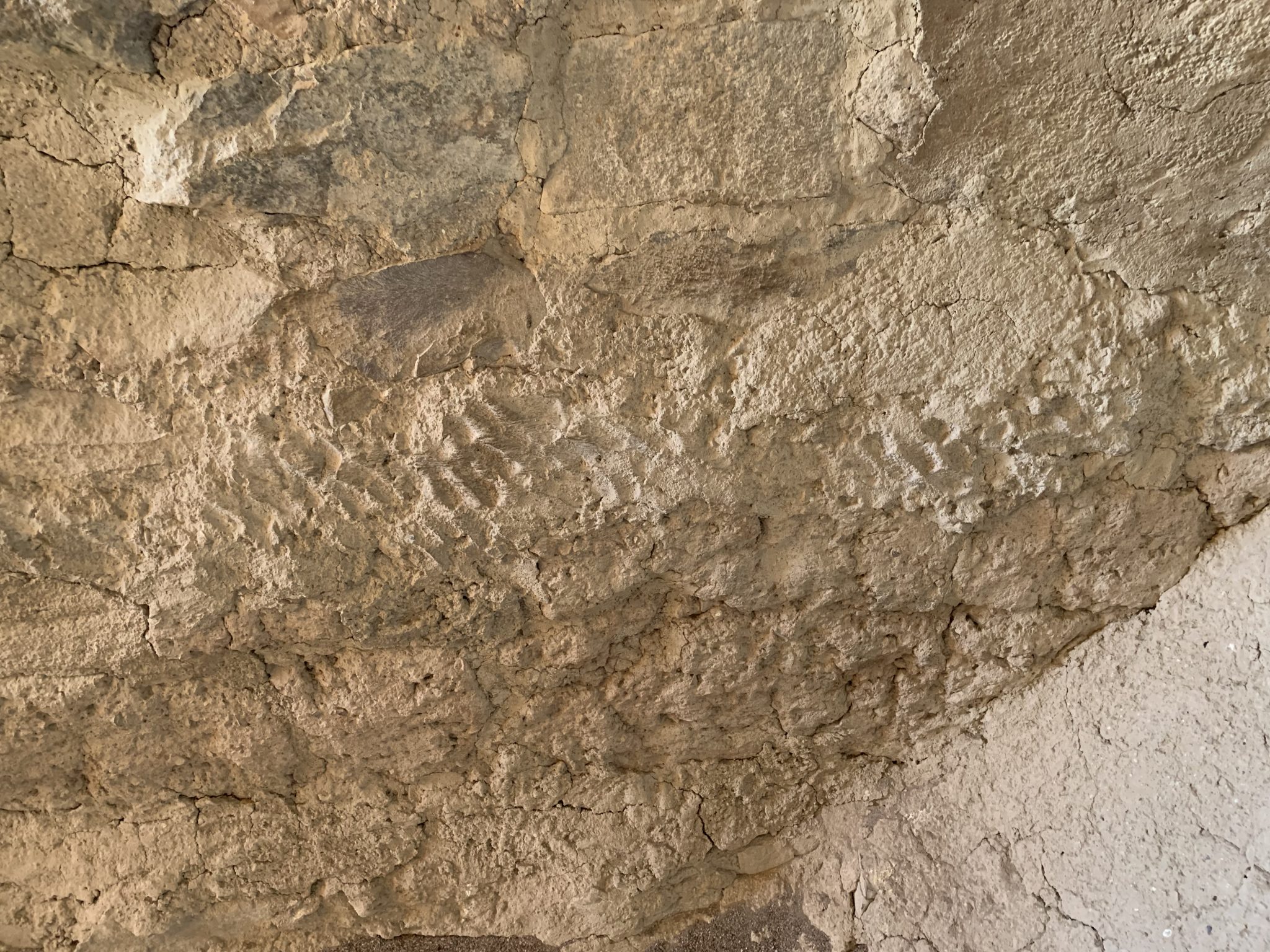
Speaking of grinding grain. This room contains some of the tools found at the site. Notice the blackened walls from fires.

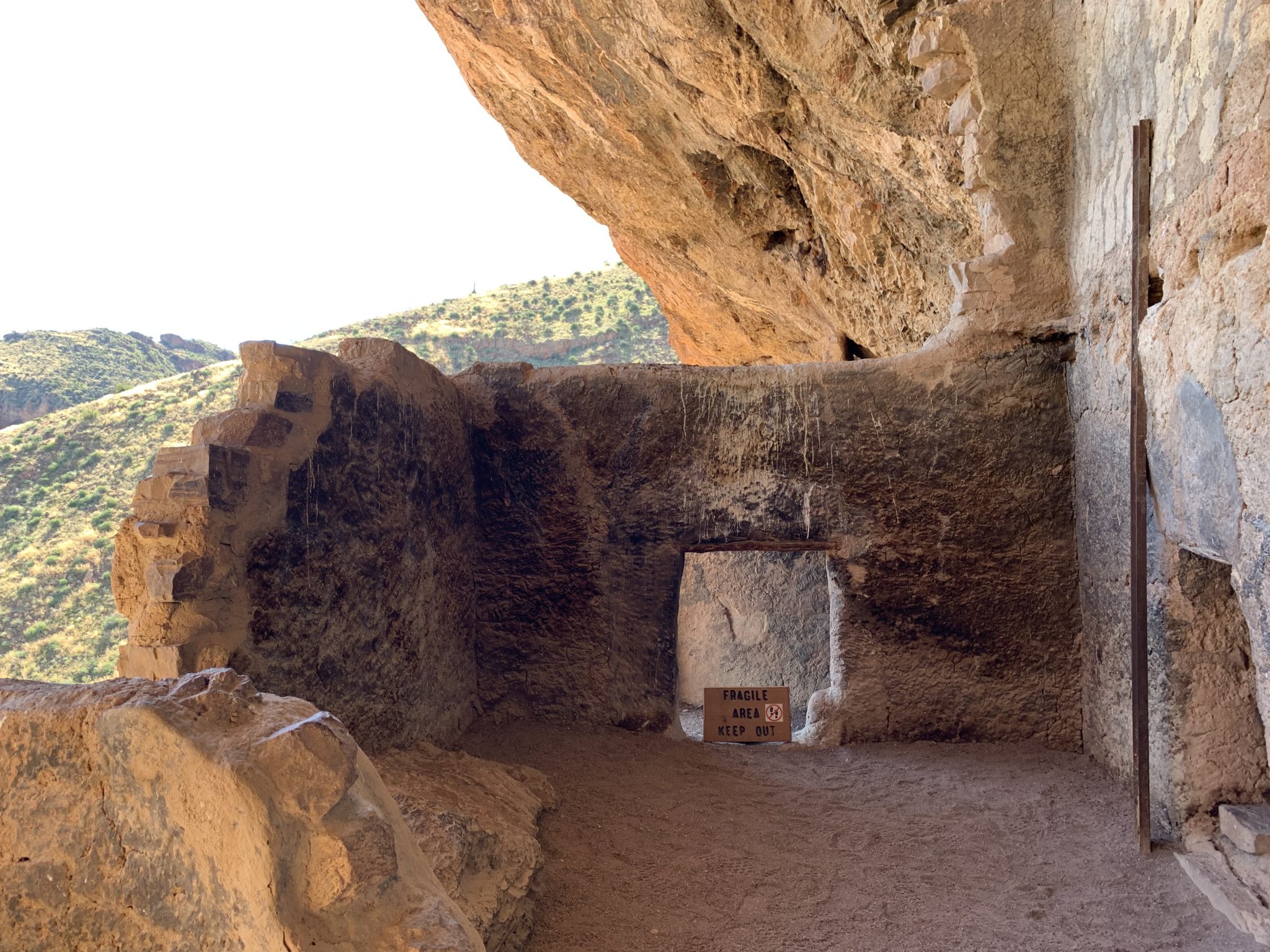
A tiny pincushion cactus with its tiny fruit.
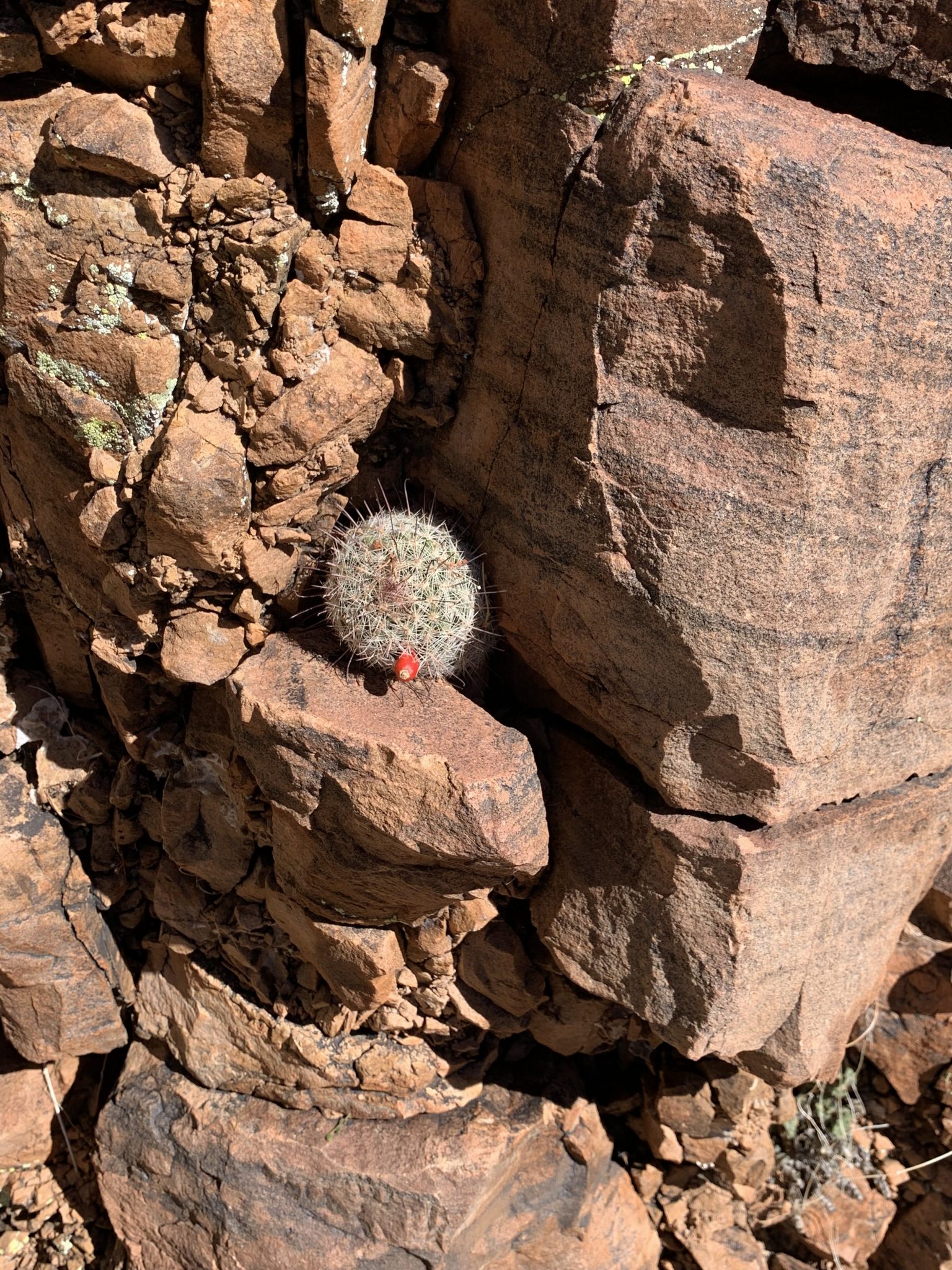
Hard to say what kind of cactus this little guy is, maybe an organ pipe, maybe a barrel? What is for sure is that it’s picked a challenging place to grow. Mary Anne’s hand gives a sense of scale.
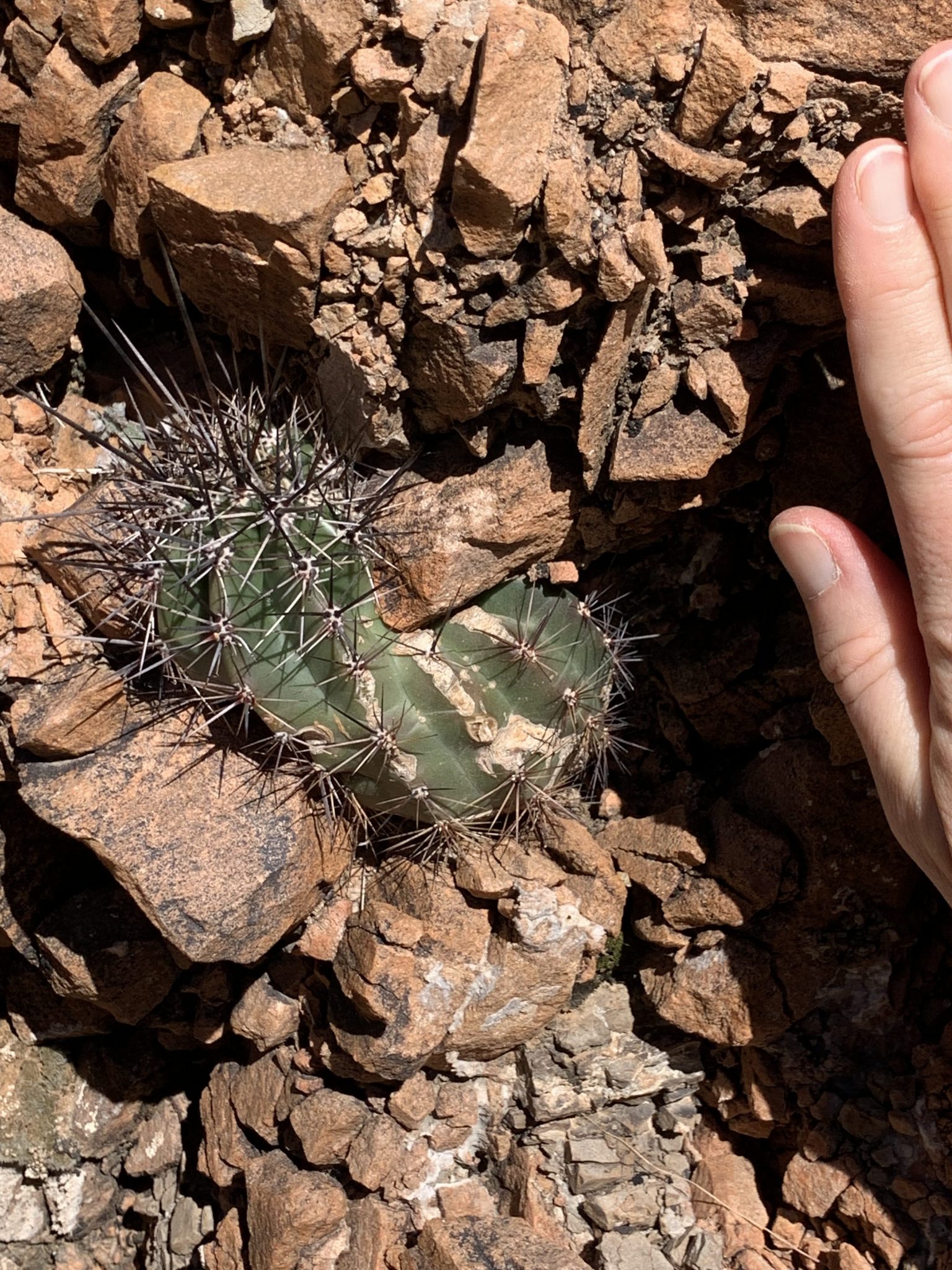
Pretty rocks seen on our descent. You can understand how all those cubic blocks littering the hillside were formed.
